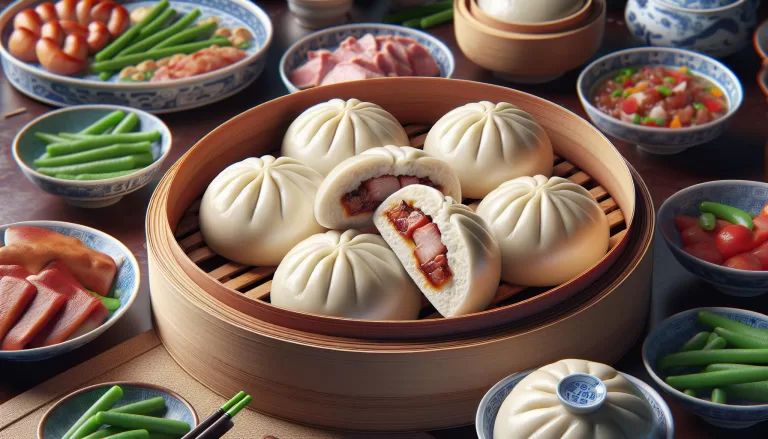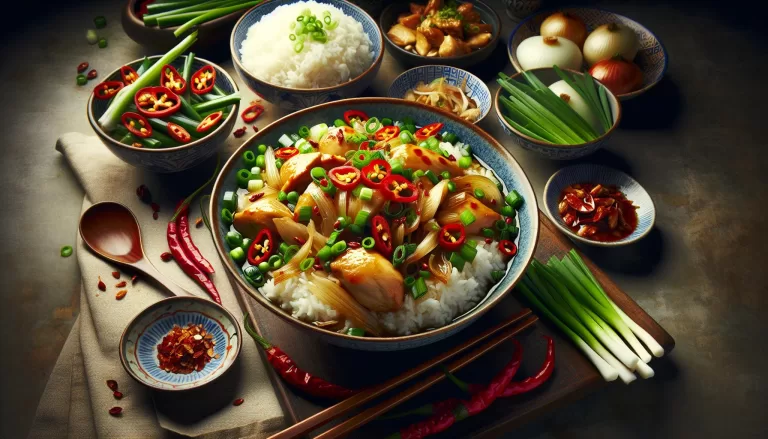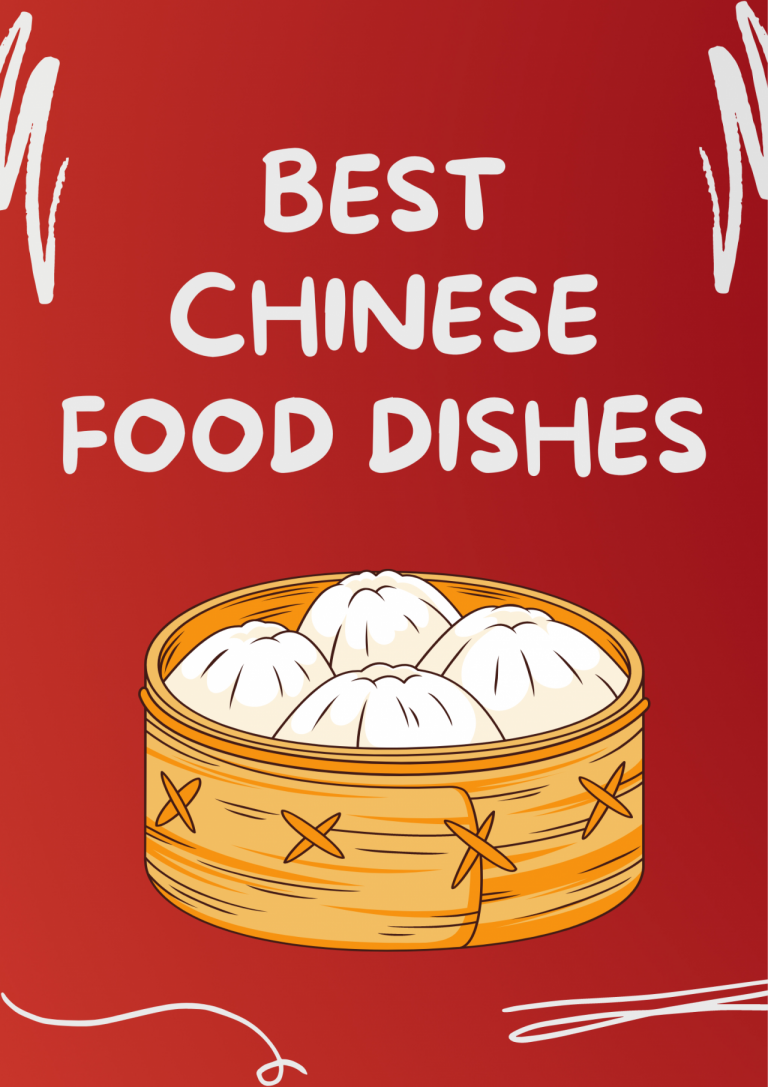Authentic Homemade Chinese Soup Recipe – Secrets for Nutritious and Flavorful Brew
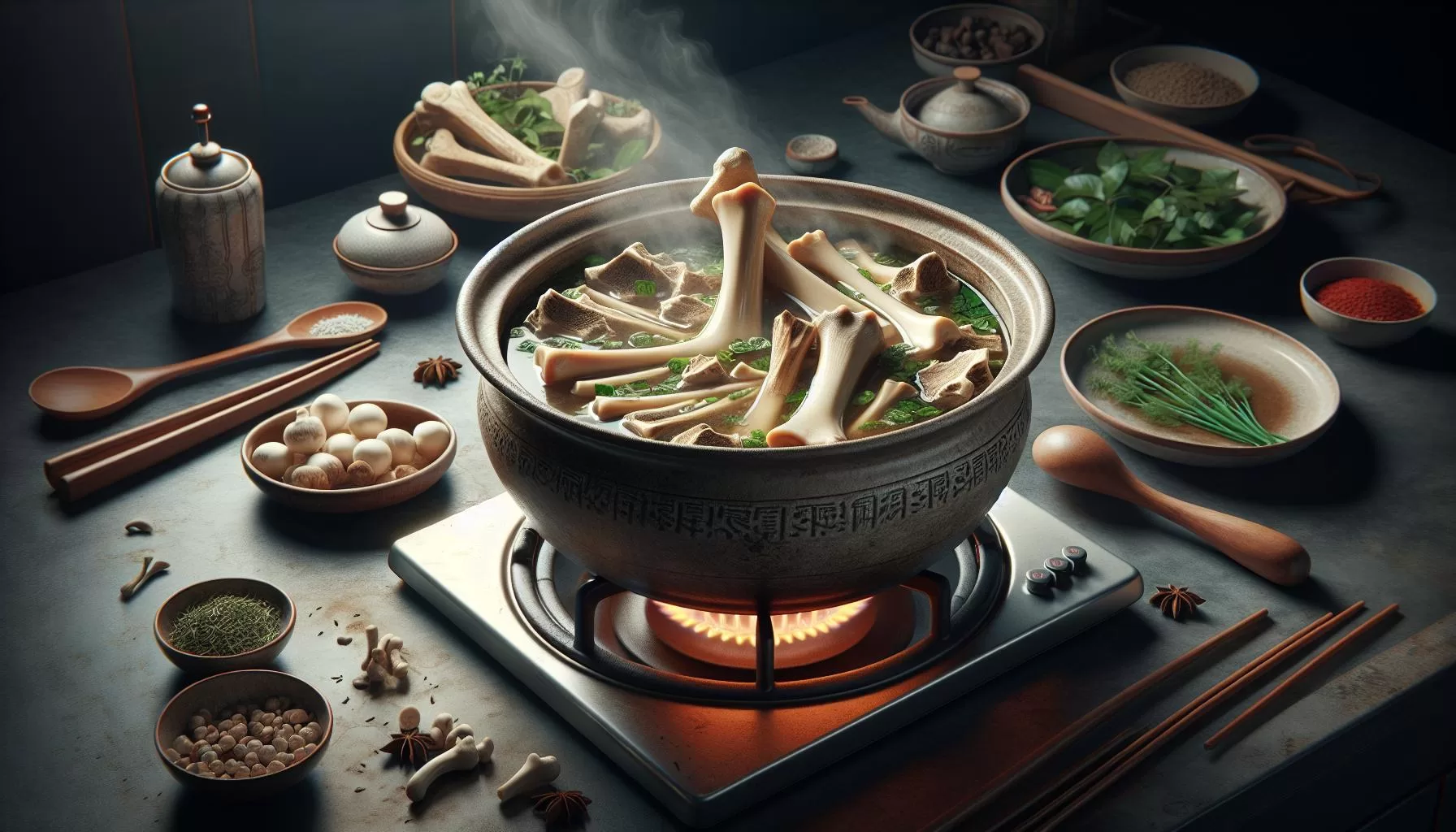
History of Traditional Chinese Soup
Peering back through time, you’ll find that traditional Chinese soups have a history as rich and complex as their flavors. They’ve been a staple of the Chinese diet for over 2000 years, starting their journey from simple sustenance to being celebrated globally for their health benefits today.
At the heart of these soups are the concepts of Yin and Yang. Traditional recipes and ingredients are carefully chosen to balance these two opposing elements. The art of making Chinese soups thus melds together culinary expertise with ancient medicinal wisdom.
What’s intriguing to note is that the soups we love and relish today were born out of necessity. In ancient Chinese society, resources were scarce, leftovers were never discarded, but creatively transformed into soups. This practice of maximizing resources is still cherished in Chinese households.
Over the centuries, regional variations began to appear. Each region of China has its own unique take on traditional soup. Influences based on local produce, geography and cultural preferences were the key contributor to this diversity.
| Region | Key Characteristics |
|---|---|
| Northern China | Rich, hearty flavors using meat and wheat noodles |
| Southern China | Lighter, subtler with a focus on fresh vegetables |
| Eastern China | Seafood based with a hint of sweetness |
| Western China | Deep and spicy with a bounty of beans and beef |
Traditional Chinese soups aren’t just about filling your stomach. They fulfill a deeper purpose of promoting wellbeing and healing. The high nutritional value of Chinese soups hails from the meticulous combination of ingredients packed with a load of antioxidants, essential vitamins, and healing herbs.
In recent years, these bowls of comfort have gained recognition worldwide, with more folks appreciating the delightful mix of flavors and their numerous health benefits. What’s most inviting about these soups besides their warming nature is how accessible they are to make.
Key Ingredients for Traditional Chinese Soup
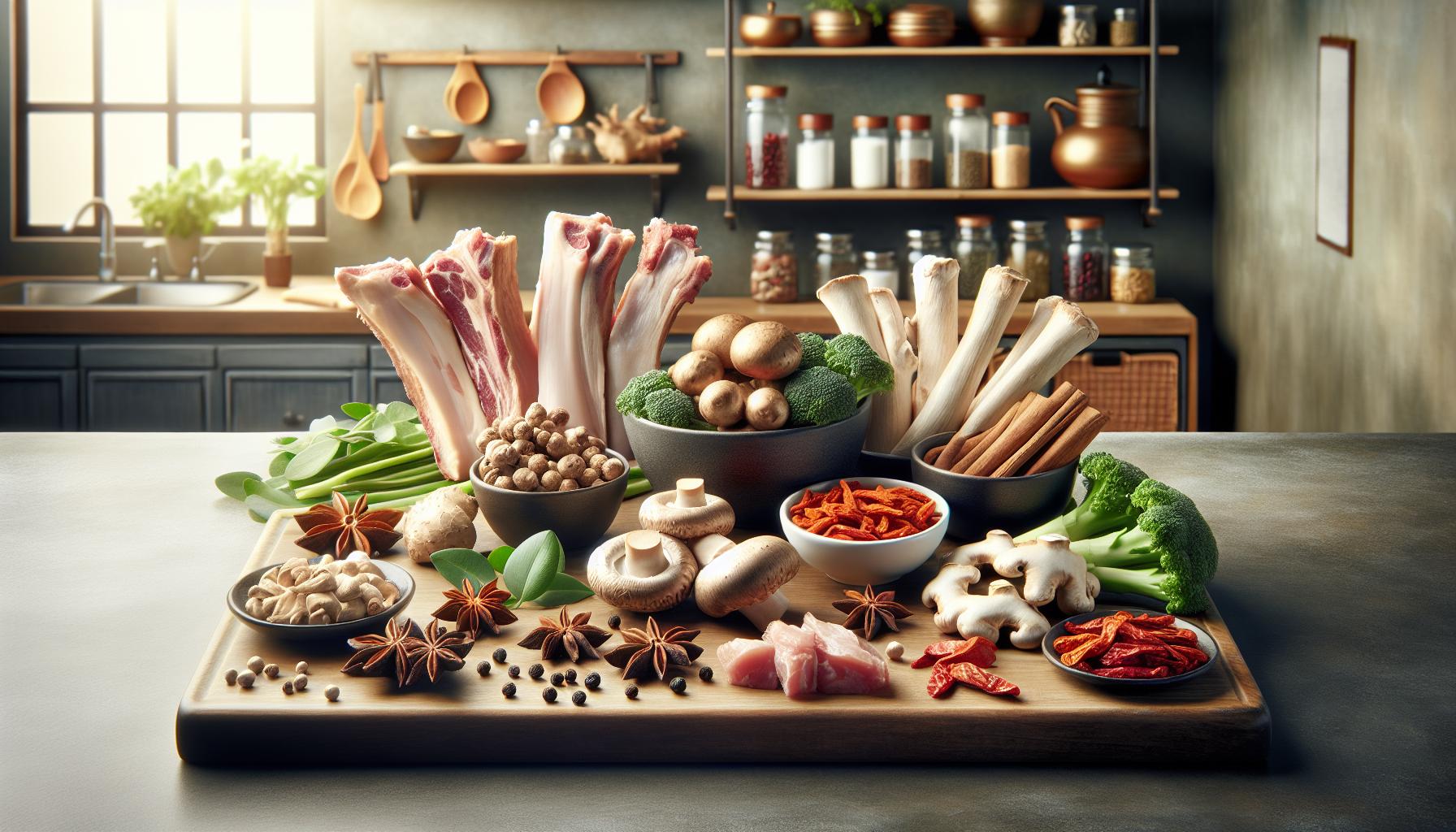
While you may already be familiar with some ingredients like chicken or tofu, traditional Chinese soups often utilize unique components granting them their distinctive taste. Let’s delve into these crucial ingredients you need in your kitchen to whip up these nourishing brews at home.
First off, you can’t talk about Chinese soups without mentioning bones and meat. A typical recipe might call for a pound of pork bones or a whole chicken, ensuring a hearty and flavorful broth. Though if you’re a vegetarian, don’t worry. With ingredients such as shiitake mushrooms and kelp, you’ll still achieve a robust flavor.
Bear in mind the regional variations. For instance, freshwater fish is essential in Jiangsu soup recipes whereas beef finds its place in northern Chinese cuisine.
It’s not only about the meat though. Balancing it out, you’ve got your vegetables and herbs. From Chinese radish to corn and lily flowers—there’s an array of produce to choose from. Furthermore, don’t forget about goji berries, ginseng, and ginger. These herbs not only boost flavor but also enhance the soup’s medicinal value.
Then there’s dried seafood. Dried scallops or shrimps bestow that piquant umami touch which really makes your soup stand out.
Let’s not overlook spices too. Chinese soups gain their soothing warmth from ingredients like star anise or Szechuan peppercorns. Yet remember, maintaining that Yin-Yang balance is fundamental in Chinese cooking.
Lastly make room for grains and beans. Items like barley or black beans bring texture to your soup and bump up its nutritional profile.
Here’s a quick reference table for your easy reference:
| Ingredient Category | Examples |
|---|---|
| Meat and Bones | Pork bones, Chicken |
| Seafood | Freshwater fish, Dried scallops |
| Vegetables and Herbs | Chinese radish, Goji berries |
| Spices | Star anise, Szechuan peppercorn |
| Grains and Beans | Barley, Black beans |
Step-by-Step Cooking Instructions
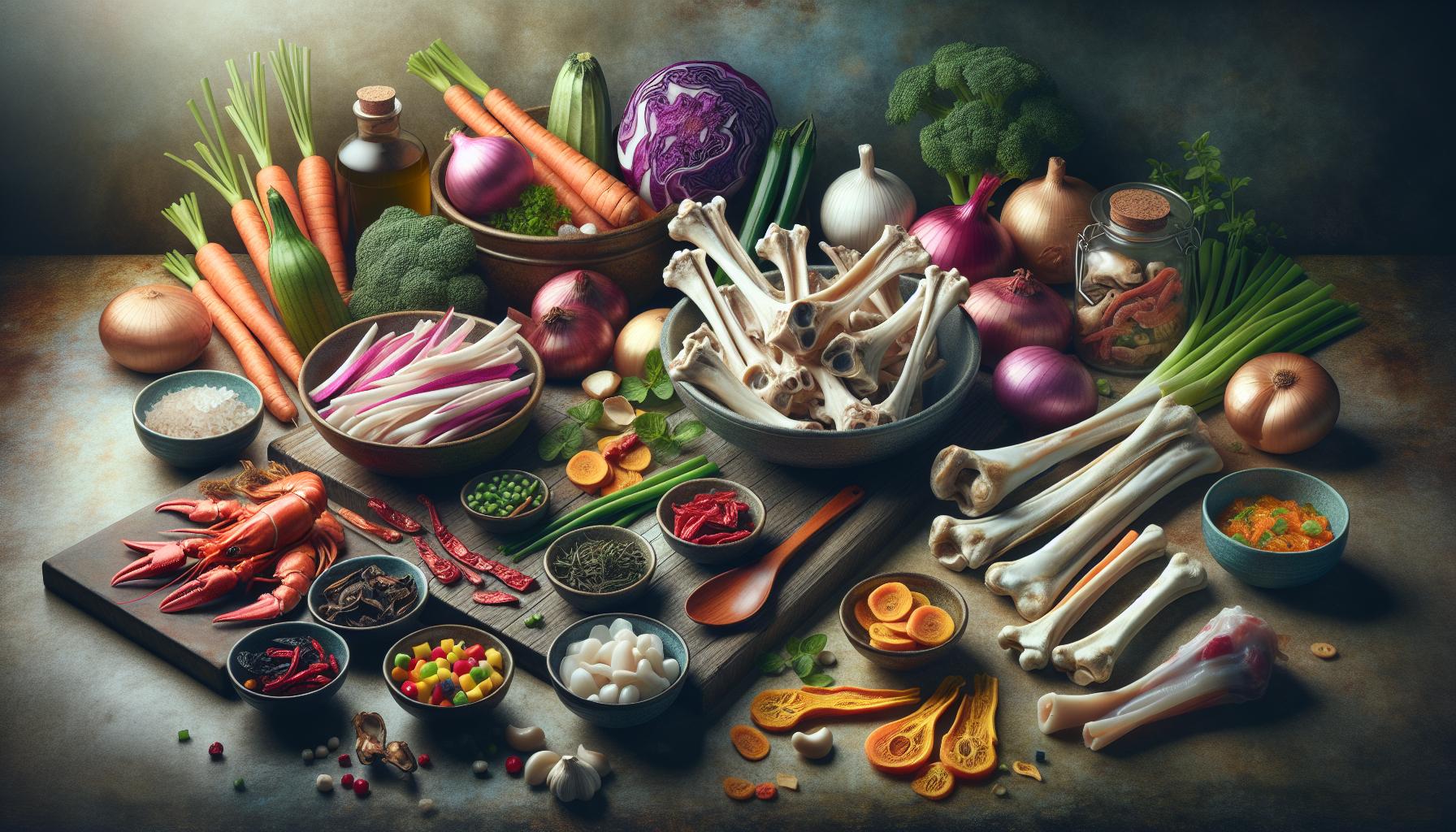
Ready to bring traditional Chinese soup to your own kitchen? Let’s walk through it, one step at a time.
- Start by preparing the bones. Select from pork, beef, or chicken, depending on your preferred flavor and region’s typical soup base. Clean them under running water until the water runs clear to ensure a pure, clean broth.
- Next, blanch the bones. This is a critical step that many home cooks overlook. Blanching removes impurities, resulting in a clearer and more refined soup. It’s all about those fine details.
- After blanching, simmer the bones in a large pot of water. This releases their flavor into the soup and forms your basic stock. This should take around 1 to 3 hours depending on the type of bones used.
- It’s time to add the meat and vegetables. Absorb the diversity of your local produce. Jiangsu? Go for freshwater fish. Northern region living? Incorporate more beef. Add them into the soup and continue simmering.
- The next step is to incorporate dried seafood, grains, and spices. They lend their unique tastes and textures to the soup and are a must-have in traditional Chinese soup.
- As your broth simmers, it’s time to focus on that all-important Yin-Yang balance. Add herbs such as goji berries or Chinese yam for Yin, or warming herbs like ginger or cinnamon for Yang. This balance is crucial in Chinese cuisine – it’s not just delicious, it’s nutritious too!
- Finally, strain and serve. Enjoy the fruits of your labor, and indulge in the richness of a homemade traditional Chinese soup.
Remember, improvisation and adaptation are key. Don’t have beef bones? Swap it for chicken. Out of radish? Use other root vegetables. It’s about creating a soup that suits your palate and fits your dietary needs.
There you have it! A step-by-step guide to the creation of your own nourishing, flavorful Chinese traditional soup. And don’t fret over the nutritional value. Rest assured, this bowl of soup packs a punch in terms of calories, protein, vitamins, and essential nutrients.
Tips for Perfecting Your Chinese Soup
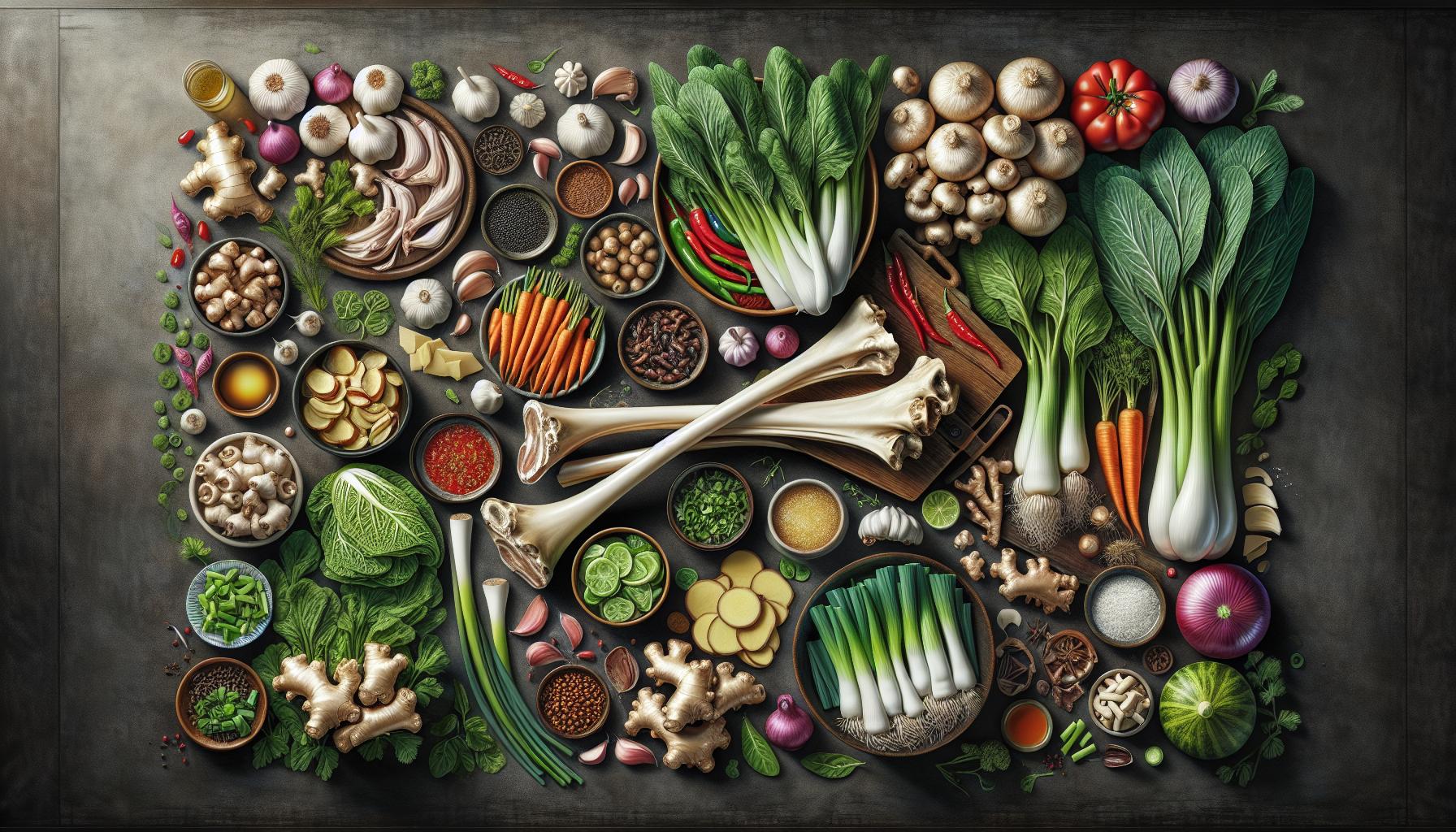
Now that you’re clear on the steps and ingredients of our traditional Chinese soup recipe, let’s dive into some expert tips to perfect yours.
Choose Your Bones Carefully
Not all bones are equal. Your soup’s flavor and nutrient profile are largely dependent on the bones you use. Opt for bones with marrow. These not only enhance the flavor but also provide a good dose of nutrients.
Blanch, Don’t Boil
In our recipe, we placed a heavy emphasis on blanching the bones. That’s not arbitrary; it’s key to keeping your soup clear. Boiling the bones can compromise the clarity of your soup and potentially lose some flavor.
Flavor Variations are Welcome
You’ve probably got your own preferences or dietary needs. Don’t be shy; improvise. Whether it’s the type of meat, vegetables, or spices you use, personalize the soup in any way you wish.
Keep a Yin-Yang Balance
In traditional Chinese cuisine, it’s important to maintain a Yin-Yang balance. There are herbs for both flavor and nutrition that help achieve this. If you aren’t sure what pairs well, a Chinese medicine practitioner or a local herbalist may be able to help.
Simmer, Don’t Rush
Patience is key when making soup. Remember, simmering the bones takes time but it’s crucial for drawing out the maximum flavor and nutrients.
Nutritional Breakdown
Your traditional Chinese soup isn’t just tasty—it’s also packed with vital nutrients. Here’s a quick breakdown:
| Nutrient | Amount |
|---|---|
| Calories | 150 per bowl |
| Carbs | 10g per bowl |
| Protein | 20g per bowl |
| Fat | 5g per bowl |
| Essential Vitamins | A, B, C, D, K, and E |
So now, armed with these tips and your favorite apron, you’re all set to whip up the perfect pot of traditional Chinese soup that your family is sure to love.
Conclusion
So, you’ve journeyed through the art of making traditional Chinese soup. You’ve learned that marrow-rich bones are key and blanching trumps boiling for a clear soup. You’ve also seen how your personal taste can guide flavor variations. Remember, achieving a Yin-Yang balance with herbs not only enhances flavor but also boosts nutrition. Patience is your ally when simmering bones to extract all the goodness they hold. With this knowledge, you’re empowered to create a nourishing, flavorful soup right in your own kitchen. This isn’t just about cooking; it’s about embracing a traditional Chinese practice that values balance, patience, and nutrition. Now, it’s your turn to bring this ancient wisdom to your modern kitchen.

